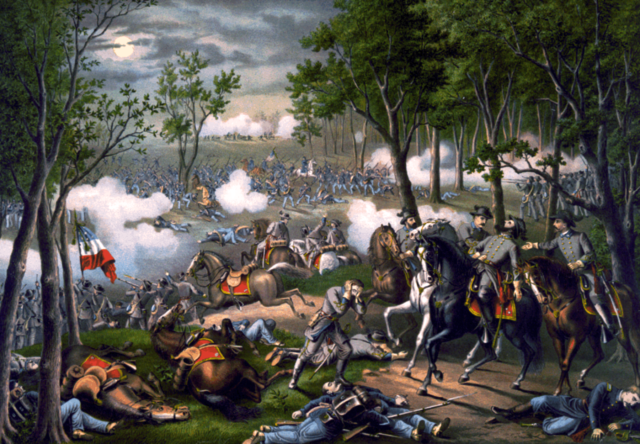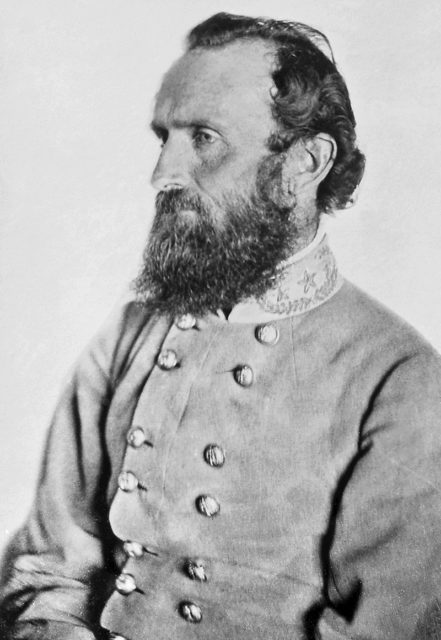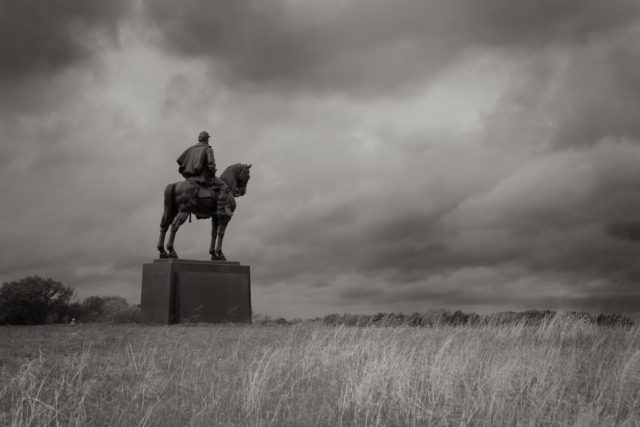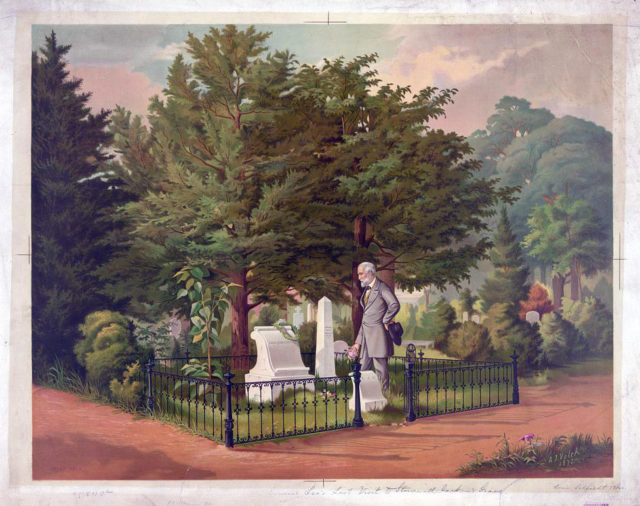While the Battle of Chancellorsville was Robert E. Lee’s greatest victory, it was the beginning of Thomas “Stonewall” Jackson’s ultimate defeat.
On May 2, 1863, Confederate Generals Lee and Jackson were hitting Union General Joseph Hooker from two sides. Lee was creating diversions while Stonewall sneaked in from behind. Even though Hooker had the greater army, Lee and Jackson had taken the advantage.
When darkness came, things became more difficult. Stonewall took a few men and headed into the forest to scout. A Regiment from North Carolina saw them approaching, mistook them for Union soldiers and opened fire. Several of the soldiers died. Stonewall was hit three times – once in the right hand and wrist, and twice in the left arm, one being just under his left shoulder. The consensus of the time was that he died eight days later at the age of 39 of pneumonia. That’s what history says.
How and why Stonewall died as a result of this battle must be discovered within the series of events.
Mistaken Identity
Why did the North Carolina Regiment fire at Stonewall? Yes, it was dark, but you should be able to tell the difference between gray and dark blue, right? At least Jackson and his officers thought so – they had continued the fighting in the dark, lit by moonlight. So what happened?

A Texas State University astronomer, Don Olson, took an interest in this question and with the help of a historian, Laurie Jasinski, recreated the scene.
They knew that Jackson had been shot around 9:00 p.m. They researched Confederate battle maps and almanacs to determine Stonewall’s position and then, using astronomical software, established the position of the moon.
They determined that Stonewall and his men had been backlit and were only visible as a silhouette to the regiment that opened fire.
Mishandling

Jackson went down in a Southern forest – known for dense underbrush and thickets. His soldiers had to carry him on a stretcher, aloft on their shoulders to keep the brambles from scraping and scratching at his wounds. Meanwhile, they were back in sight of the Union soldiers and were under cannon fire.
The journey to the field hospital took a long time. When cannon fire became heavy, they had to stop and put him down. At one point he tried to walk off into the woods on his own but nearly fainted.
Once they had him back on the stretcher, one of the soldiers, trying to carry the General, avoid cannonballs and traverse the forest all at the same time, tripped on a grape vine and lost his hold. General Jackson came down on his broken arm.
His opened artery opened further and began pouring fresh blood. He “groaned piteously.” After half a mile, they came upon an ambulance, at which point Stonewall, who had regained his composure, asked for strong spirits. They had none. A little while later they stopped at a house for water.
When they eventually made it to the hospital, the doctor stemmed the bleeding from the artery with his finger. He was then taken to yet another hospital where he was kept still for two hours to recover from shock before surgery to amputate his arm.
Next day he was considered to be recovered enough from the amputation to undergo a 27-mile wagon ride to a nearby estate to await a train that would never take him home.
Cause of Death

Four days later he begins to complain of chest pains and difficulty breathing. His surgeon and doctor, Hunter Holmes McGuire, diagnoses pneumonia in the right lung.
Pneumonia was one of the most common causes of death during the Civil War. Doctors of the time sometimes relied on methods that were fast going out of favor. Stonewall was given mercury for its strong laxative properties and to induce vomiting. The idea was to purge his system of bad humors – what they thought were excessive fluids that were harming his body.
Modern doctors disagree with McGuire’s determination of the cause of death. They have three theories.
Most believe that he died of sepsis. At the time, McGuire said that he consistently checked his operation site and there were no signs of infection. This leads other modern doctors to conclude that he did indeed have pneumonia, but that an infection entered through that route and he subsequently died of sepsis.

Dr. Joseph J. Dubose and Dr. Philip Mackowiak, both associated with The University of Maryland Medical School, believe that the actual cause of death was pulmonary embolism.
Dr. Dubose points out that Stonewall was dropped twice on his way to the first field hospital and that being jarred in such a way could have caused a contusion or a bruise on the lung that caused pneumonia and then embolism.
Dr. Mackowiak thinks that the pulmonary emboli kept recurring over the four days and destroyed the general’s lung.
The additional reasoning of these two doctors notes that pneumonia patients cough, but Jackson didn’t and that embolisms are more common among soldiers that undergo amputation.
That said, McGuire didn’t report some prominent symptoms of embolism, either. Given the hours of jostling, dropping, and other suffering that Jackson went through on the way to the field hospital together with the 27 miles of bumpy wagon travel, the embolism theory holds weight.
In spite of all this, we may never know exactly what killed this famous Confederate General, who did so much for his side during the American Civil War.
